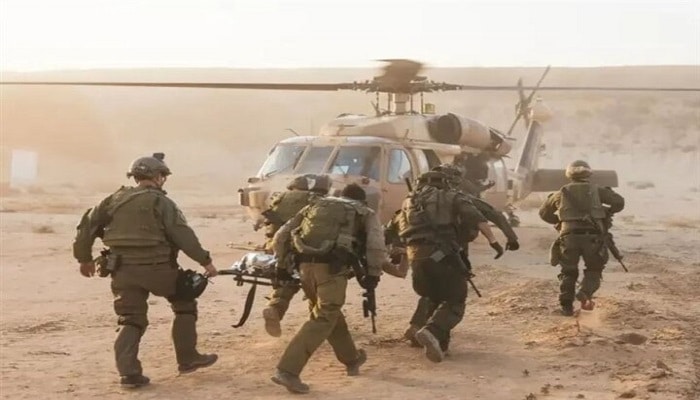PNN – Four basic factors have led to the increase in Israeli casualties in the Gaza war, especially in recent weeks.
According to the report of Pakistan News Network, the Al-Mayadeen Network news site wrote in an article that Since the start of Operation “Gideon’s Chariots” by the Zionist regime in the Gaza Strip, the regime’s casualties have increased to an unprecedented level, and a series of attacks by resistance forces in the Khan Yunis and Shuja’iyah areas have taken place in recent weeks.
These operations, especially the recent killing of 16 Israeli soldiers in an armored vehicle in Khan Yunis, were carried out with great courage and will continue for a long time, something we did not witness before the Israeli regime’s renewed aggression on Gaza on March 8.
In recent weeks, there has been a significant shift in the course of the conflict in Gaza, and despite the extensive censorship by the Zionist regime, several operational and tactical events have occurred that have caused the collapse of the Zionist military. These events have caused many of them to be angry about the continuation of the war, and some have refused to serve in the reserve forces.
Read more:
Hebrew media: Israeli army conceals death and injury figures.
Acquisition of new explosives
One of these developments is the use of new types of improvised bombs by resistance groups, especially the Qassam and Quds Brigades, some of which, such as the “Shawaz” and “Saqib” bombs, are planted in the ground and target enemy tanks and heavy personnel carriers, while some are “anti-personnel” and cause great damage to enemy military elements outside their tanks and vehicles.
This important development has a significant consequence: resistance groups have obtained large quantities of high-explosive explosives that they did not have before. It seems that access to these explosives, which are of the “C4” type, was obtained by confiscating shipments intended for sabotage operations by spies and mercenaries, and the resistance obtained these shipments through blind spots and is using these materials in the production of a new generation of its bombs. A significant portion of these materials are used in the production of anti-armor bombs, which have high power in penetrating the armored equipment of the Zionist enemy.
Expanding the resistance’s tactical capabilities to carry out combined operations
On the other hand, it seems that the tactical capabilities of the Palestinian resistance have expanded, especially in the field of carrying out combined attacks, and they are using this type of operation in various regions. These attacks usually begin with the explosion of large bombs, followed by a direct engagement with medium and light machine guns. The al-Huda ambush in the Shojaiyeh area a few days ago was of this type.
One of the important features of compound ambushes is that they do not allow enemy soldiers to rest or react appropriately, forcing them to make wrong operational decisions, which in many cases leads to greater casualties.
Israel’s war plans become repetitive
The third tactical component, which is no less important than the previous ones, is the Israeli army’s use of repetitive operational plans, which has allowed the resistance to be aware of the Israeli army’s attack plan and trajectory, and to know what weapons they are using. Numerous images show that Zionist soldiers are under the surveillance of resistance forces for long periods of time.
In the occupied territories, harsh criticism has been directed at the Israeli military commanders, who accuse the army and military commanders of lacking motivation to fight and not having new war plans. This is not only due to the decline in the morale of the officers and soldiers, but also as a result of a phenomenon called “tactical bankruptcy” that has arisen due to the prolonged war. This is in addition to the frustration and hopelessness that has arisen among a large number of the Zionist soldiers in Gaza.
Read more:
Zionists’ use of out-of-date equipment
The fourth development regarding the increase in Israeli casualties is that the Israeli army is using much of the equipment that it had decommissioned in previous years in its operations. This has increased the damage and casualties caused by the resistance forces’ operations and has left many dead and wounded at the hands of Israel.
Especially in recent months, the Zionists have been using almost exclusively old and worn-out tanks and armored vehicles, which in many cases are completely destroyed or burned as a result of explosions. This is due to a lack of equipment in the armored division of the Israeli army, which was also acknowledged by the Chief of Staff of the Army, Eyal Zamir, when he assumed this position. The Boma, Shizarit, and M133 armored vehicles, as well as the third-generation Merkava tanks, are among this equipment that was abandoned years ago, but was once again brought back to the battlefield. The Israeli army has also experienced a shortage of D9 bulldozers, which has led it to use less secure equipment, armored vehicles, and tanks, and thus resistance forces can damage this equipment with minimal effort.

